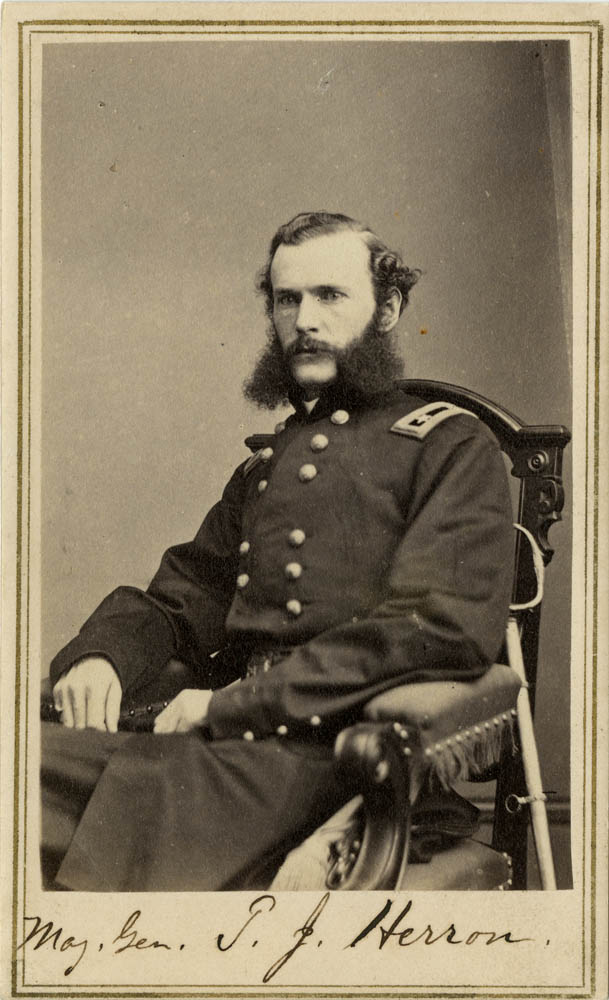Born in Pittsburgh in 1837, Herron was a banker in Dubuque, Iowa when the Civil War began. He commanded the “Governor’s Grays” of the 1st Iowa Infantry at the Battle of Wilson’s Creek. Promoted to lieutenant colonel of the 9th Iowa Infantry, Herron was wounded and captured at the Battle of Pea Ridge, but was exchanged and promoted to brigadier general of volunteers.
By the end of 1862 Francis J. Herron commanded the Second and Third Divisions of the Army of the Frontier. When word reached him that a Union force under General James Blunt was threatened in northwest Arkansas, Herron marched his troops from Springfield, Missouri to Prairie Grove, Arkansas, just outside Fayetteville, a distance of more than 100 miles in the incredible span of three and a half days.
On his arrival at Prairie Grove on December 7, 1862, Herron began launching costly and unsuccessful assaults against the Confederate army of Major General Thomas J. Hindman. Hearing cannon fire, Blunt immediately marched to the sound of the guns, and his timely arrival saved Herron’s command.
Tactically, the Battle of Prairie Grove was a draw; strategically, the battle was a Union victory, as the Confederates retreated to Van Buren, Arkansas.
Herron was promoted to major general in March 1863 (the youngest soldier in either army to achieve the rank at the time of his promotion), and took part in the Siege of Vicksburg. He led the 13th Army Corps for the remainder of the war and resigned from the army in 1865. Awarded the Medal of Honor for his heroism at Pea Ridge, Herron died in New York City in 1902.
Carte-de-Visite by E. & H. T. Anthony, New York, N.Y.
Image Courtesy Wilson’s Creek National Battlefield; WICR 31673




